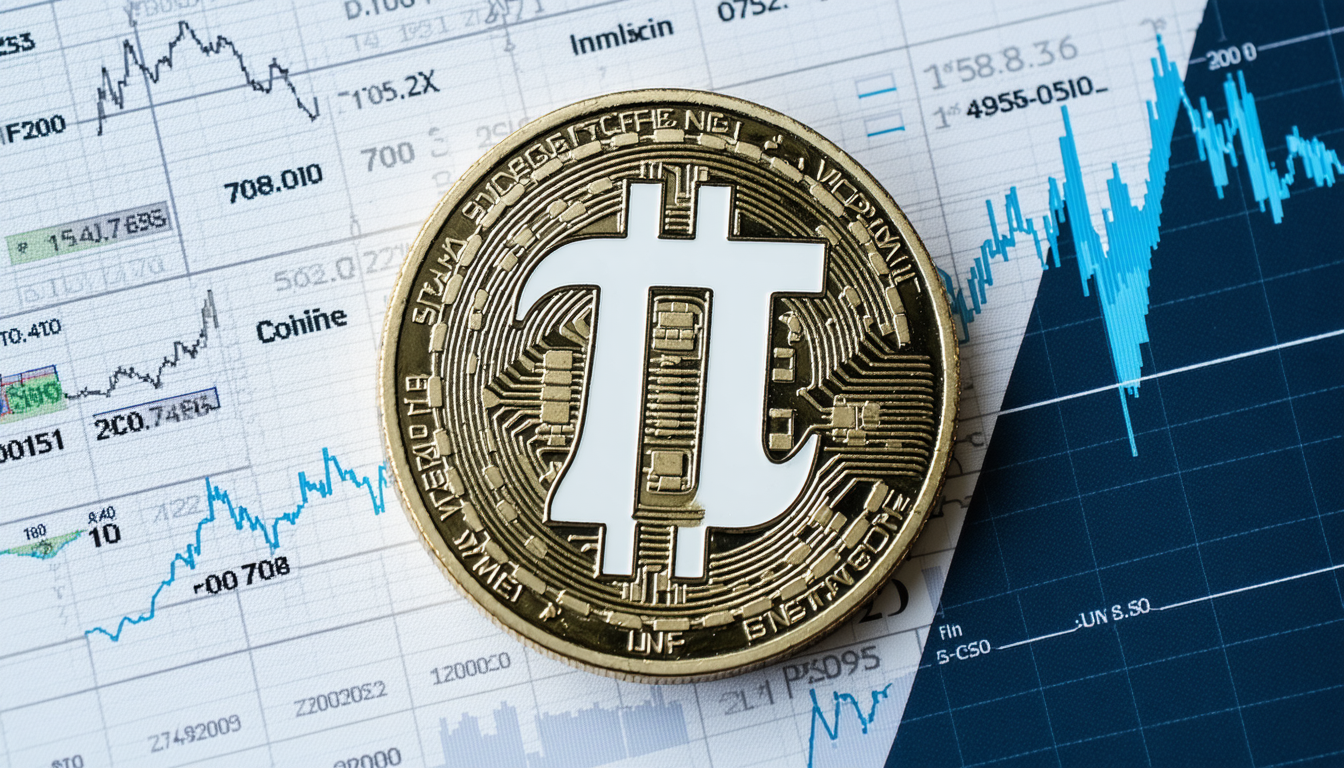The value of Pi Coin, a cryptocurrency that has captured global attention for its unique mining approach and ambitious vision, is under renewed scrutiny in the United Kingdom as investors seek clarity on its real-world potential. With recent developments in digital assets regulation and growing interest from both retail users and institutional players, the debate over Pi Coin’s valuation has intensified in 2025.
Surge in Interest as Mainnet Launch Nears
Pi Network, launched by Stanford graduates, initially attracted millions with its mobile mining model that allowed users to earn coins without expensive hardware. As the project approaches a long-awaited mainnet launch this year, UK-based holders are eager to understand what their accumulated tokens might be worth.
According to industry analysts, anticipation is high because mainnet activation will enable true peer-to-peer transfers and open up trading on exchanges. “The transition from testnet to mainnet is critical,” says blockchain consultant Emma Carter. “It’s when we’ll see whether there’s genuine demand for Pi Coin or if it remains speculative.” The UK crypto community—one of Europe’s most active—has seen surging online discussions about possible price scenarios once trading begins.
Regulatory Landscape Shapes Value Prospects
The regulatory environment plays a significant role in determining the value of Pi Coin for British investors. The Financial Conduct Authority (FCA) continues to tighten oversight on digital assets amid concerns about consumer protection and market integrity. Recent FCA statements have emphasized that unlisted cryptocurrencies like Pi remain high-risk investments until they secure exchange listings and demonstrate compliance with anti-money laundering standards.
“UK regulators are watching new projects closely,” notes fintech lawyer Daniel Hughes. “For any coin—including Pi—to achieve sustainable value here, transparency around supply mechanisms and use cases will be essential.” This cautious stance means many local exchanges may delay listing until further clarity emerges post-mainnet launch.
Market Data: What Are Holders Expecting?
Despite uncertainty over official pricing, secondary markets have emerged where early adopters attempt to trade IOUs or promises of future coins at speculative rates. Some platforms report indicative values ranging from £10–£30 per 1000 PI tokens ahead of mainnet—a figure driven more by hype than fundamentals at this stage.
Key factors influencing these expectations include:
- Total circulating supply: Once unlocked at mainnet.
- Exchange listings: Which major platforms will support PI trading.
- Utility adoption: Whether merchants or apps begin accepting PI payments.
- Community size: Over 40 million registered users globally add network effect potential.
- Regulatory approval: Especially within major financial hubs like London.
Industry observers caution against reading too much into pre-launch prices due to low liquidity and lack of formal exchange support. “Until there’s transparent price discovery on regulated markets,” warns analyst Sophie Patel, “any quoted value should be treated as provisional.”
Broader Impact: Opportunities and Risks for Stakeholders
For individual holders across the UK who have mined thousands—or even millions—of PI tokens since 2019 using their smartphones, hopes are high that these holdings could translate into tangible gains once tradable markets emerge. However, experts urge caution given past volatility seen with other new cryptocurrencies upon initial listing.
Institutional players are also monitoring developments but remain largely on the sidelines pending regulatory green lights and clearer data around transaction volumes post-mainnet launch. Meanwhile, developers building apps atop the anticipated Pi ecosystem see opportunities if user engagement translates into real economic activity beyond speculation alone.
Potential risks include:
- Sudden price swings immediately after listing
- Delays or technical issues during migration from testnet
- Regulatory interventions affecting accessibility
- Security vulnerabilities during early stages
Conversely, successful integration into payment systems or partnerships with established fintech firms could boost confidence—and thus value—in coming months.
Looking Ahead: What Comes Next for Value of Pi Coin?
As July progresses toward an expected mainnet rollout window later this summer or autumn, all eyes remain fixed on how quickly—and widely—the coin can establish itself within both retail commerce networks and regulated exchanges serving British customers.
Market participants anticipate several key milestones:
- Official announcement confirming exact date for full network migration.
- First wave of centralized exchange listings accessible by UK residents.
- Early merchant integrations allowing direct spending via mobile wallets.
- Ongoing updates regarding compliance measures taken by core development team vis-à-vis FCA guidelines.
- Community-driven initiatives aimed at expanding practical use cases beyond simple holding or trading activities.
While some skeptics warn that initial valuations may prove unsustainable if utility fails to materialize quickly enough after launch day euphoria fades away; others argue that sheer scale—the project claims tens of millions worldwide—could provide staying power unmatched by previous grassroots crypto efforts originating outside traditional finance circles.
In summary: The true value of pi coin remains uncertain but highly anticipated among UK stakeholders awaiting concrete action steps over coming weeks—a pivotal period likely to define whether it becomes a lasting player within Britain’s evolving digital asset landscape or another short-lived phenomenon swept up by broader crypto market cycles.






